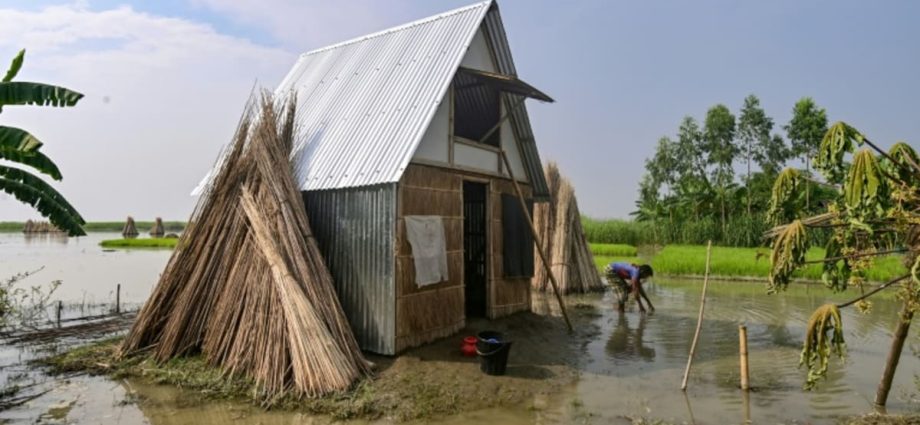
Winner of the Aga Khan Award for architecture for her design of the Bait-ur-Rouf Mosque in Dhaka, and designer of the country’s Independence Monument, Tabassum developed prototype shelters to test them against flash flooding and storm winds.
“It can be assembled and disassembled very easily,” she told AFP, calling it a “climate preparedness” project, with each house costing around US$450 to build, including labour.
“It’s a mobile modular system, so that’s why it can be moved from one location to another,” said Tabassum, the winner of Britain’s Soane Medal for architecture in 2021, including for her tiny house work.
Most of the Khudi Bari owners use their own solar panels, according to Mohammad Azam Khan whose charity, National Development Programme, joined with Tabassum’s organisation to build the homes for farmers.
Arman Abedin, an associate of Tabassum, said every four-metre-high tiny house has two floors, each 9.3 sq m.
He said the architect has also used the Khudi Bari model to build a larger community centre for Rohingya refugee women in the Bangladeshi camps.
“ALL OVER THE COUNTRY”
Mohammad Kalu, 35, who lives in one of the Shildaha homes on stilts, said the design meant people could easily adapt.
“If water rises to the chest or even cheek level, still we can stay in this house … we can go to the upper floor and cook with gas or firewood,” he said.
“When the current is strong, we untie the tin walls and the water goes through our houses without any obstruction.”

